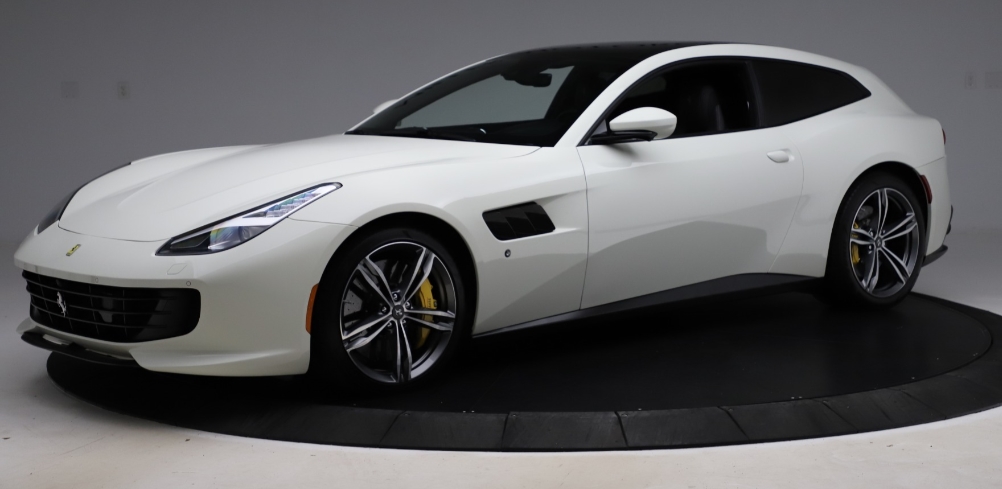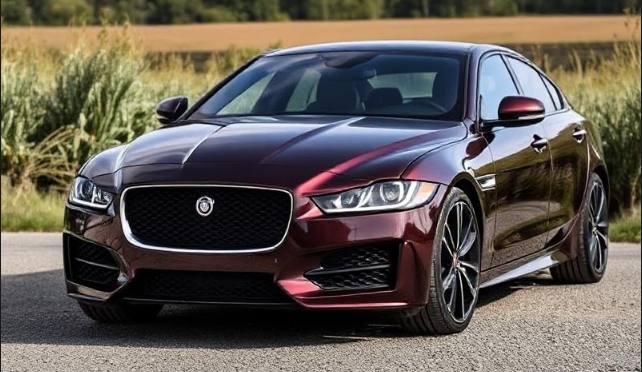The Evolution of the Shooting Star: A Deep Dive into the Ferrari GTC4Lusso’s Journey
The Ferrari GTC4Lusso. The name itself evokes a sense of grandeur, a blend of Italian passion and sophisticated utility. It stands as a unique chapter in Maranello’s hallowed history, a car that dared to blend blistering performance with an unexpected practicality. More than just a potent grand tourer, the GTC4Lusso represented an evolution of a concept established by its predecessor, the FF, pushing the boundaries of what a Ferrari could be. This article will delve into the fascinating journey of the GTC4Lusso, tracing its lineage, examining its models and trim levels, and understanding its place in the Ferrari pantheon.
The Genesis: From FF to GTC4Lusso (2016-2020)
The story of the GTC4Lusso truly begins with the Ferrari FF, launched in 2011. The FF – standing for “Ferrari Four,” signifying four seats and four-wheel drive – was a revolutionary departure for the brand. It offered the exhilarating performance expected of a Ferrari, but with the added versatility of a shooting brake body style, providing more cargo space and the comfort to carry four adults. While the FF was a bold statement, it was also a car that would eventually pave the way for a more refined and potent successor.
In 2016, Ferrari unveiled the GTC4Lusso. This was not merely an facelift; it was a significant evolution of the FF’s concept. The name itself carried weight. “GTC” had long been associated with Ferrari’s grand touring cars, emphasizing performance and comfort. The “4” continued the theme of four seats and, importantly, four-wheel drive. The “Lusso” signified luxury and elegance, underscoring the car’s elevated status.
The GTC4Lusso retained the distinctive shooting brake silhouette that made the FF so unique, but with a more sculpted and aggressive aesthetic. The front fascia received a sharper, more aerodynamic design, with a more prominent grille, redesigned headlights, and integrated daytime running lights. The rear also featured a more muscular stance, with a refined spoiler and quad exhaust pipes that hinted at the potent V12 residing beneath.
Under the hood, the beating heart of the GTC4Lusso was a naturally aspirated 6.3-liter V12 engine, an evolution of the one found in the FF. This powerhouse delivered a formidable 680 horsepower (690 CV) at an ear-splitting 8,000 rpm and 520 lb-ft (700 Nm) of torque, with 80% of that torque available from a mere 1,750 rpm. This was mated to a 7-speed dual-clutch transmission, a significant improvement over the FF’s single-clutch gearbox in terms of smoothness and responsiveness.
One of the most crucial advancements from the FF to the GTC4Lusso was the evolution of its four-wheel-drive system. The FF’s innovative “four-wheel drive, four-wheel steering” (4RM-S) system was refined and enhanced for the Lusso. This system was not just about traction; it was about delivering exhilarating performance in all conditions. The 4RM-S system featured a power take-off unit (PTU) that sent power to the front wheels when needed, controlled by an electronic clutch. This, coupled with rear-wheel steering (4WS), provided exceptional agility and stability, allowing the driver to harness the V12’s immense power with confidence, even in low-grip situations.
.

.
The GTC4Lusso’s Interior: A Symphony of Luxury and Technology
Inside, the GTC4Lusso offered a cabin that was both opulent and driver-focused. Ferrari employed the finest materials, with hand-stitched leather, carbon fiber accents, and aluminum trim creating an atmosphere of bespoke luxury. The seats were designed for both comfort on long journeys and support during spirited driving, accommodating four adults with surprising ease.
A key feature of the Lusso’s interior was its dual cockpit design. This innovation aimed to provide both the driver and the front passenger with an engaging and immersive experience. The passenger even had their own dedicated display, allowing them to view navigation, vehicle information, and even control certain audio functions. The infotainment system was significantly upgraded from the FF, featuring a larger touchscreen, Apple CarPlay integration, and an enhanced navigation system.
The Arrival of the GTC4Lusso T: A Turbocharged Divergence (2017-2020)
In 2017, Ferrari introduced a new variant that offered a distinct flavor of the Lusso experience: the GTC4Lusso T. The “T” in its name signified its turbocharged heart. While the naturally aspirated V12 remained the iconic choice, Ferrari recognized the growing demand for turbocharged engines, which offered a different character and strong low-end torque.
The GTC4Lusso T was powered by a 3.9-liter twin-turbocharged V8 engine, an evolution of the one found in the California T and the 488 GTB. This potent powerplant produced a healthy 602 horsepower (610 CV) and a substantial 561 lb-ft (760 Nm) of torque, with the torque curve peaking much lower in the rev range compared to the naturally aspirated V12.
Crucially, the GTC4Lusso T adopted a rear-wheel-drive configuration, shedding the sophisticated all-wheel-drive system of its V12 sibling. This decision was intentional, aiming to offer a more traditional, rear-driven Ferrari driving experience, with a greater emphasis on being a pure driver’s car for those who valued agility and a more visceral connection to the road. The rear-wheel steering system was retained, however, to enhance maneuverability.
The GTC4Lusso T also featured a slightly different interior ambiance, often with a more performance-oriented feel, while still retaining the core luxury and practicality of the Lusso nameplate. It was positioned as a more accessible entry point into the GTC4Lusso family, appealing to buyers who desired the shooting brake practicality and Ferrari performance but with a turbocharged V8 and a more focused, rear-wheel-drive dynamic.
Trim Levels and Options: Personalization at its Finest
Ferrari has always excelled at offering extensive personalization options for its clients, and the GTC4Lusso was no exception. While there weren’t distinct “trim levels” in the traditional sense of fixed packages, buyers could extensively customize their vehicles through Ferrari’s Tailor Made program. This allowed for virtually limitless personalization of:
Exterior Colors: Beyond the standard Ferrari palette, clients could choose from historical colors, custom shades, and unique finishes.
Interior Materials: The finest leathers, Alcantara, and other premium fabrics could be selected, with a vast array of stitching options and color combinations.
Carbon Fiber: Extensive use of carbon fiber was available both inside and outside, from the steering wheel and dashboard trim to the aerodynamic elements and wheels.
Wheels: A selection of different alloy wheel designs and finishes was offered.
Exhaust Systems: Options for sportier exhaust systems to enhance the V12’s sound were available.
Braking Systems: While standard high-performance brakes were fitted, upgraded carbon-ceramic brakes were a popular option.
Infotainment and Technology: Advanced audio systems, integrated navigation enhancements, and connectivity options could be specified.
Personalized Details: This included options like embroidered logos on headrests, custom badging, and unique interior trim inserts, allowing each GTC4Lusso to be a true one-of-a-kind creation.
The GTC4Lusso Lusso designation specifically referred to the V12 model, distinguishing it from the GTC4Lusso T which featured the turbocharged V8 and rear-wheel drive. The core difference lay in the powertrain and drivetrain, creating two distinct driving experiences within the same versatile package.
The End of an Era: Discontinuation and Legacy (2020 onwards)
The Ferrari GTC4Lusso, in both its V12 and T forms, concluded its production run around 2020. The evolving landscape of automotive technology, with the increasing push towards electrification and hybridization, along with stricter emissions regulations, likely contributed to the end of its production. Ferrari has since moved on to its next-generation four-seater, the stunning Ferrari Roma, which adopts a more traditional coupe silhouette, and the even more practical Purosangue SUV, which while offering four seats and all-wheel drive, represents a different interpretation of Ferrari’s grand touring capabilities.
The GTC4Lusso leaves behind a significant legacy. It proved that a Ferrari could be both exhilaratingly fast and remarkably usable. It defied convention with its shooting brake design, offering practicality without compromising on the soul-stirring performance and emotional connection that defines the Ferrari brand. It demonstrated Ferrari’s engineering prowess with its advanced all-wheel-drive and all-wheel-steering systems, while also showcasing its ability to adapt to changing market demands with the turbocharged V8 variant.
For enthusiasts and collectors, the GTC4Lusso represents a fascinating and somewhat niche chapter in Ferrari’s history. It’s a car that appeals to those who appreciate the blend of extreme performance, luxurious comfort, and a touch of unconventional practicality. It’s a shooting star in Maranello’s constellation – unique, brilliant, and a testament to Ferrari’s willingness to push boundaries and redefine what a supercar can be. The spirit of the GTC4Lusso, the idea of a Ferrari that can truly do it all, continues to inspire, even as its production chapters close.







